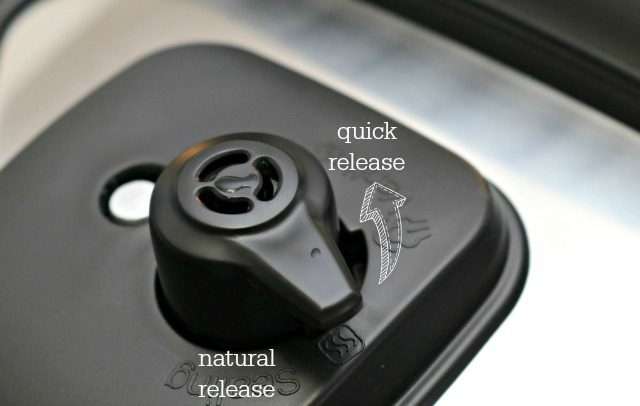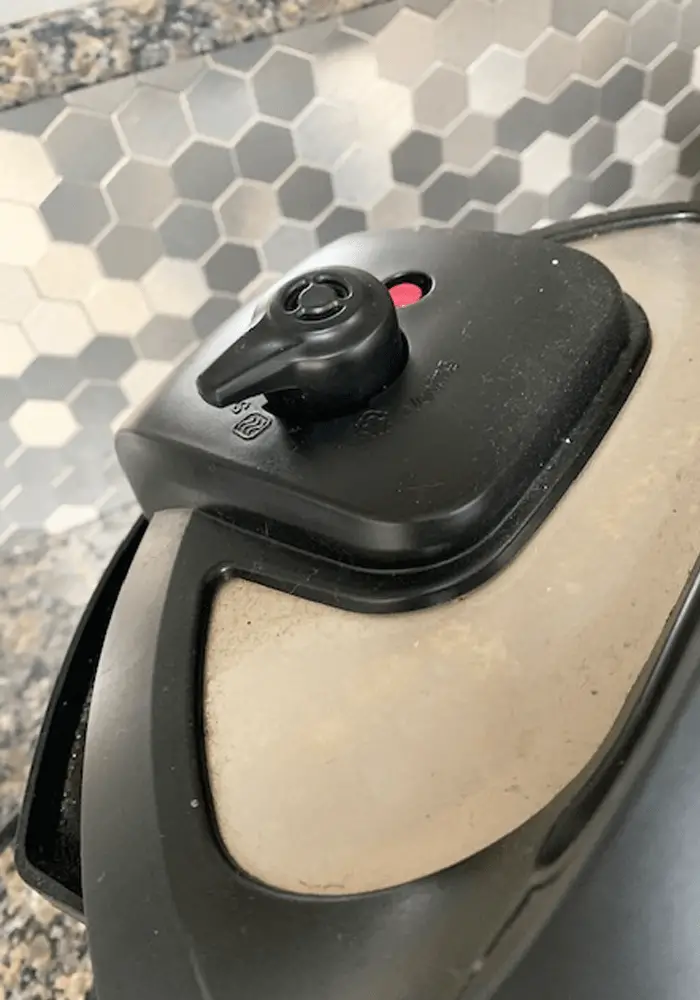When Do I Use The Natural Release Function
The natural release function is perfect for when youre planning to cook meats or grill your protein. This will ensure that the meat is super soft and tender.;
You can also ideally use this function when it comes to cooking foods that are foaming. Steel cut oats, pasta and soup are good examples.;
Avoid putting in veggies that cook quickly and delicate seafood .;
Amazon always has great prices and sales on Instant Pots. I’ve ordered a few there myself.
Instant Pot Slow Cook Setting
The Slow Cook is a non-pressure cooking setting that is compatible for use with any common slow cooker/Crockpot recipe. The pot is heated but is not pressurized and the Less, Normal and More modes correspond to Low, Medium and High slow cooker settings but you will need to adjust the time manually.;
You might want to use this setting for making dishes ahead of time while youre away from home or overnight. There are times when slow-cooking might work better for certain recipes than quicker pressure cooking. Below are the steps for how to use the Slow Cook setting on Instant Pot.;
Instant Pot Natural Release Method
Remember our soda can example? What happens when you wait a bit before opening a shaken or dropped can of soda? I guess nothing happens. It opens very normally. This is the Instant Pot Natural Release Method.
Waiting 10-30 minutes allows the pressure in the Instant Pot to drop naturally. Once the heat source is turned off, the temperature starts to drop. As the temperature drops, the pressure also drops. Once the Instant Pots temperature drops below 200 degrees, the floating valve will fall to the down position. The Instant Pot is no longer pressurized and is safe to open.
So when is it best to use the Instant Pot Natural Release Method?
Resting meat after grilling allows the natural juices to reabsorb into the meat. The same is also true for the Instant Pot. Foamy foods like oatmeal and soup are also great candidates for natural release.
Don’t Miss: How To Make Pot Roast In Instant Pot
How To Quick Release Instant Pot
Once you know how to quick release, you can also opt for a combination approach. Some people find its a good idea to let the Instant Pot natural release for a few minutes first, and then apply a little quick release action to let off more steam.
Best Recipes for the Quick Release Setting
Timed Natural Release A Mix Of Quick Release And Natural Release

A Timed Natural Release is a hybrid version of the natural release and quick release methods.
This method is handy when you do not have much time on your hands, but your recipe demands a natural release process. Here, you get the benefit of both steam releasing naturally as well as quickly while the food continues to cook during the waiting period.
Also Check: How To Make Chile In Instant Pot
First Thing You Should Do With Your Instant Pot
When you first receive your Instant Pot, the first thing you should do is to take time to read the guidelines set on the instruction manual that the pot comes with.
Then conduct a water test. After that, look for recipes that you can cook using the pot. There are tons of resources online that you can refer to for ideas on what to cook on your instant pot, so check them out.
When Should I Use Quick Release
Quick Release is used to prevent your food from overcooking. Some dishes are sensitive, such as when cooking chicken in an Instant Pot or Macaroni and Cheese. The last thing anyone wants is for chicken to become rubbery or mac and cheese to be too mushy.;
To prevent these things from happening, its essential to complete the cooking process as fast as possible. Using the Quick Release does just that.;
You May Like: How To Make Yogurt In Instant Pot Without Yogurt Button
So How Do Instant Pot Settings Work
Each Instant Pot setting button is essentially a SMART PROGRAM option. Most smart programs, or buttons, simply set the pot to HIGH or LOW pressure for a specific period of time most closely aligned with the food it is meant to cook. For example, the default SOUP button sets the pressure cooker for 30 minutes at HIGH pressure, which you could use to cook any food that requires that much time and pressure.;
If you press each SMART setting button more than once, it will toggle between Normal, Less or More options, which gives you more control of time, temperature or default pressure. For example, the RICE button can be set to Less or More depending on how soft or firm you like your rice or the type of rice you might be cooking.;
Some buttons dont use the pressurizing function of the Instant Pot. For example, Slow Cook and Sauté settings use the heating element that sits underneath the inner pot. They are programmed for heat level and time.;
To keep it super simple, it is possible to use the Instant Pot for all recipes using just a few important buttons. With the Pressure Cook or Manual buttons in addition to the Pressure Level;and and buttons, you can control the time and pressure level which are otherwise preset for the rest of the buttons. This will work for any recipe that requires pressure. For non-pressure cooking, the Sauté, Slow Cook and Yogurt buttons help you accomplish a similarly custom cooking setting.
Does It Really Matter Which You Use
Yes, it is important to depressurizing your pressure cooker in the right way, according to the food youre cooking. It can make a huge impact on the foods texture and temperature. Just like leaving a steak on the grill too long, your food can become overcooked and dry if you release pressure in the wrong way.
Two of the main concerns are:
- Releasing the pressure too quickly when cooking a pot full of soup or foamy foods. When you do a manual release of a pot full of soup or broth, its possible that the steam will sputter and spray all over your kitchen. It can take quite a while for a pot full of liquid to release pressure, so it can take a good 5 minutes to release it with a manual release. During that time, steam is spraying and heavy aromas are filling your house.
- Overcooking delicate foods. If youre cooking asparagus in the Instant Pot and you allow it to do a natural release of pressure, its likely the asparagus will be complete mush before you take it out. The same applies to any vegetables youre steaming. It also applies to meats that dry out when over cooked, like chicken breast or salmon.
Also Check: What Is L000 On Instant Pot
How To Make An Instant Pot Naturally Release
Q: When Do I Use A Natural Pressure Release
Using a natural pressure release allows the cooking to stop gradually. You dont want to open the valve quickly when the ingredients inside could be foaming. Youll get foam shooting out through the valve, so use a natural pressure release when making steel cut oats, a large pot of soup or pasta.
You also want to use a natural release for;large cuts of meat. Just like youd let meat rest after grilling it, a slow natural release is said to let the meat relax and be more tender.
Our Favorite Recipes to use Natural Pressure Release
During a natural release, the;cooking continues so you need to take that in to account when determining your cook time. If a recipe calls for a Quick Release, you can use a Natural Release if you prefer, but reduce the cook time.
Also Check: How To Cook Frozen Tamales In Instant Pot
How To Know When The Pressure Is Down Inside The Instant Pot
Every model of Instant Pot comprises of a float valve. This valve rises and falls while cooking to release pressure inside the pot. The position of the valve indicates the pressure level inside the Instant Pot. If the float valve is standing higher than the normal level, then the pot is still under pressure. On the other hand, is the valve is low or in its normal state, this means the pressure inside the pot has been released and its no longer sealed.
Advantages Of Natural Release

Using Natural Release, the pressure inside the Instant Pot;drops gradually;over time. Theres;less movement;going on inside the pressure cooker, which can be a very good thing when your pot is extremely full or youre cooking something frothy;like beans;or grains.
The Natural Release method is also useful when youre cooking big cuts of red meat. The slow and steady release of pressure gives the meat time to rest and reabsorb its own moisture, resulting in;juicer and more tender meats.
Don’t Miss: How To Cook Farro In Instant Pot
What Is A Quick Pressure Release
This is when you turn the pressure release valve/quick release valve to “open” or “venting” at the completion of the cooking cycle. This forces the steam to release from the Instant Pot quickly.
When you hear the “beep/s” that the cooking cycle has been completed, immediately switch the pressure/steam release valve ; to “venting”.; This opens the vent and allows all accumulated steam/pressure to release from the Instant Pot right away.
Use caution when switching the pressure release/quick release valve to venting. Use a pot holder or silicone glove to avoid burns and always keep your face/hands away from the steam release valve.
You will know the Quick Pressure Release is complete when you see/hear the float valve drop down. Once that has happened it is safe to open the Instant Pot.
When to use Quick Pressure Release
A Quick Pressure Release means pressure/steam within the Instant Pot is released very quickly so its perfect for foods that are delicate and those that you don’t want to cook longer than the cooking cycle .
Instant Pot Porridge Setting
The porridge setting on the Instant Pot can be used to cook oatmeal using old-fashioned oats and steel-cut oats, rice porridge and congee or porridge-like dishes that use a mixture of grains that expand in liquid. Ideally, you should use natural release when cooking high-starch foods that expand or a combination of 5-10 minutes natural release and quick release to follow. Below is how to use the Porridge setting on Instant Pot.
- Turn the Instant Pot on, it will say OFF to indicate the Stand-By mode. Add the grains, liquid and spices or fat if you wish. Secure and lock the lid. Press the Porridge button. The default setting is pre-programmed to set the pot to cook at High pressure for 20 minutes. If you press the Porridge button again, you can adjust the mode from Normal to Less or More.
- Less mode 5 minutes at High pressure this is suitable for cooking rolled oats and risotto-like porridge or rice porridge with slightly firmer to bite texture.;
- Normal mode 20 minutes at High pressure use for steel-cut oat porridge or rice porridge with a slightly softer texture and for making congee.;
- More mode 30 minutes at High pressure use for a porridge/congee that contains a mixture of beans or tougher grains.;
If desired, use the / + buttons to further customize the time. The cooking time may be adjusted at any time during pressure cooking.;
Here are some suggested water to rice/oats ratios for porridge and oatmeal dishes:
Read Also: What To Cook In Instant Pot
Is Natural Release Safe
Yes, this method is safe. Natural release doesnt require you to move the steam valve manually, so there isnt as high a risk of coming into contact with hot steam. However, the natural release method is not always your best choice. Food continues to cook during this process, leading some foods to overcook. For those, youd want to opt for the quick release method.
Whatever method is used, just be sure the steam isnt being released during the cooking processthats one of the Instant Pot mistakes everyone makes. If youre wondering how an Instant Pot differs from an old school pressure cooker, we looked at the Instant Pot vs. a pressure cooker and found which one reigned supreme.
How To Do A Quick Release On Instant Pot
Here are the instant pot quick release instructions, well if you call them instructions as it so simple:
When the instant pot beeps it will look like this:
Then as shown below press the cancel button:
Then on the top of the instant pot move the valve from sealing to venting.
Then once the pressure has released, you are done, and you can take the lid off the instant pot and enjoy your food.
Also Check: How To Cook Chicken Breast In Instant Pot
How To Do A 10 15 Minutes Natural Pressure Release
After the cooking cycle finished, wait 10 15 minutes before moving the Venting Knob from Sealing Position to Venting Position to release the remaining pressure.
Always make sure the Floating Valve completely drops before opening the lid.
Whats the advantage?
- Compare to Quick Release:;Significantly reduces the;chance of food splattering out from the Pressure Release Valve.
- Compare to Natural Release:;Faster release method when the pressure cooker is full of food with high liquid volume.
Why Do You Quick Release Outside
See my Instant Pot is venting outside? I do it often.
Why? To avoid house smell like food for days. Especially with high liquid volume meals like soups, steam can be coming out for 3-5 minutes. And 8 quart Instant Pot has more pressure inside than 6 quart.
It literally takes seconds to move Instant Pot on the patio. If you have one. But you can totally do Quick Release inside your kitchen.
Also, with high liquid Instant Pot recipes like soups, there is a lot of splattering. Keeps countertop clean and then rain cleans the patio. Ha!
Read Also: How Long To Cook Rice In Instant Pot
Quick Release In Bursts
This is a slower form of the quick release method, and also has a variety of benefits! The quick release in bursts will stop your cooking process instantly.
Here, the steam is released in small bursts, so you avoid messy froth and food from splattering out of the steam release valve. This method is faster than a timed natural release and slower than a quick release.
Quick Release Vs Natural Release Instant Pot

When you start using your Instant Pot, you will notice that some recipes call for quick release, others for natural release, and some for a combination of both methods. This question of pressure release can be confusing at first, and for new pressure cooker users, it can be worrying. In this article, we are going to compare quick release vs natural release Instant Pot.
Doing a quick release of pressure, where you remove the pressure and steam from the pot immediately, can seem dramatic and potentially dangerous because it can generate a lot of steam. Leaving the Instant Pot to release pressure naturally is less hectic but not always suitable for your recipe.
Releasing the pressure is a very important part of the cooking process. So how do you do it, and what does it all mean?
Quick Release
Quick release often abbreviated to QR or QPR in cooking instructions is where you turn the pressure valve to the quick release setting in order to open the vent and expel all the steam once the cooking cycle has been completed. This is signaled by a series of beeps in most Instant Pot models
Once the steam has been fully expelled from the pot, you will notice that the float valve drops down. When this happens, it is safe to open the Instant Pot.
This method is used when the food needs to immediately stop cooking so that it does not spoil or go mushy such as vegetables. It is also important for meals that you must not overcook.
Natural Release
Also Check: How To Instant Pot Hard Boiled Eggs
Instant Pot Soup Setting
The default Instant Pot soup setting is pre-programmed to set the pot to cook at HIGH pressure for 30 minutes. The soup program brings contents of the pot to a slow simmer and results in a clear broth due to lack of boiling motion. Below is how to use the Soup/Broth setting on Instant Pot.
- Turn the Instant Pot on, it will say OFF to indicate the Stand-By mode. Add all ingredients, seasonings and liquids to the pot and stir. Secure the lid on top. Press the Soup button. It will say Normal, 30 minutes at High Pressure. If you press the Soup button again, you can adjust the mode from Normal to Less or More .;
- Normal mode 30 minutes at High pressure recommended for soups with meat.
- Less mode 20 minutes at High pressure recommended for soups without meat.;
- More mode 4 hours at High pressure recommended for soups that require longer cook times such as rich bone broths. Release the pressure naturally.;
Use the / + buttons to further customize the time. The cooking time may be adjusted at any time during pressure cooking.;
INSTANT POT SOUP COOKING TIPS
We find that most vegetables, including potatoes, dont need the full 20 minutes at High pressure and will often overcook and get too soft, so for most vegetable-based soups, 5 to 10 minutes at High pressure is usually enough.
